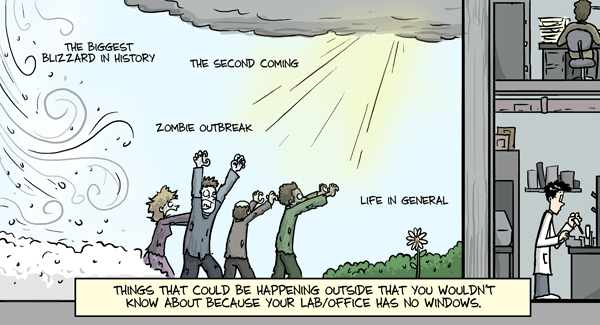"If you haven't called your Congressional Representative and Senators about the debt ceiling, you are as much at fault as they are."
Decisions will be made soon. That is why it is critical to speak up now. You know and I know that researchers, research-based institutions, patients and their families and our nation’s economic future will all be worse off if Congress chokes off funding for health research.
- We can’t afford to lag other nations when it comes to R&D. Without research-fueled innovation, our economy will continue to sputter.
- We can’t afford to stall progress against life-threatening and disabling diseases, biding our time as chronic conditions like Alzheimer’s, Parkinson’s, autoimmune disorders, depression, PTSD and other health threats take a rapidly increasing human and fiscal toll.
- We can’t afford to dismantle the basic research infrastructure at universities, academic medical centers and independent research institutions across the country, hamstringing the U.S. R&D pipeline.
You and I know that whether the goal is to wage battle against diseases like Alzheimers or to ensure our nation remains competitive in the global economy, it is counterproductive and counterintuitive to divest from medical research. Now we must get that message across to Congress. Research!America is committed to providing advocacy tools to help you do just that.
Today's Tool: A script for when you call Congress.
Phone calls are an effective way to connect with your representatives and can have greater impact than emails or other forms of electronic communication. The script below is just a template. Providing in-district or state examples of the impact of NIH funding will strengthen your argument and demonstrate just how important this issue is to you. It can also be tailored for use in advocating for other key health agencies. Drop us a line in the comments if you would like assistance in tailoring this script.
- Hello, my name is __________ and I’m calling from ________ in your district.
- I am calling because I’m very concerned about the current debate over federal spending for programs that are important to me and all Americans.
- The National Institutes of Health (NIH) play an essential role in discovering life saving cures and treatments while enhancing our nation’s economic competitiveness.
- Unfortunately, these difficult fiscal times have resulted in over $300 million in cuts to the NIH budget, and obtaining funding for medical research is harder than it has ever been.
- As your constituent, I urge you to support legislation that provides robust NIH funding and I urge you to convey this message to your colleagues in Congress.
- NIH research is crucial to improving the health of all Americans and creates the high quality jobs that our nation needs today.
- Thank you for speaking with me and I look forward to hearing more from your office on this key issue
If we keep fighting together, we will make a difference.



















